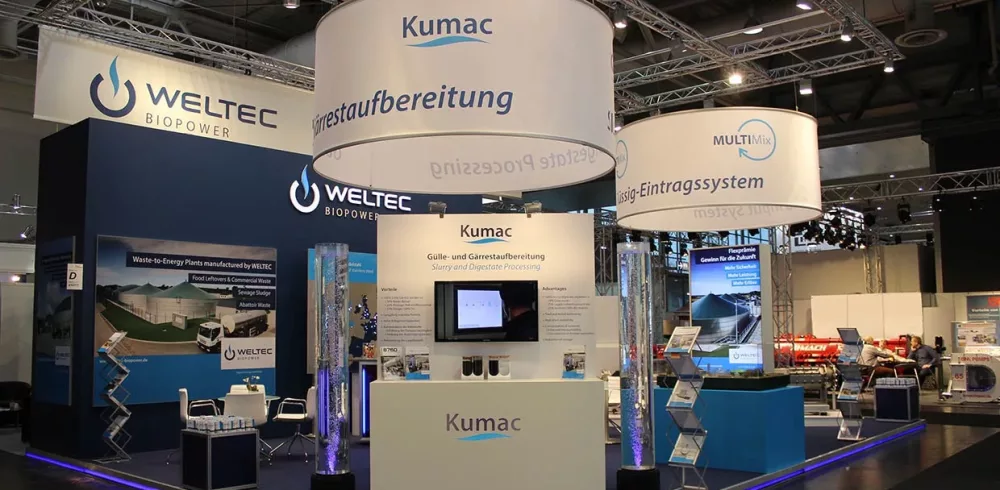WELTEC BIOPOWER will present its innovative and proven biogas technologies and services at the EnergyDecentral in Hanover, Germany, from the 13th until the 16th of November. At booth D 12 in hall 25, the plant constructor will explain their Kumac processing system for slurry and digestate and its custom-tailored biogas plant concepts to the trade show visitors. The biogas specialists‘ exhibition portfolio will also feature their CHP, biology and repowering services.
The focus will be on plant concepts for the energetic utilisation of organic waste and agricultural leftovers. The consistent anaerobic digestion of leftovers requires a combination of individual planning and reliable components. WELTEC‘s technologies are highly suitable for processing various types of waste; the range of technologies comprises the use of stainless steel as a construction material, substrate shredding units, hygienisation solutions and compatible control technology.
With more than 300 plants built in 25 countries on five continents, WELTEC BIOPOWER has the expertise needed for the optimum design and rollout of these projects. WELTEC is currently building a number of new plants in Uruguay, Italy, France, Greece and Northern Ireland.
Moreover, the booth will showcase the liquid manure and digestate processing system Kumac. With this trend-setting system, WELTEC offers a technically mature procedure for the efficient reduction of the slurry and digestate volume. Several Kumac systems have been operating in Belgium and the Netherlands for already 11 years.
In late summer 2019, the first system of this type in Germany will go live in Saxony. The operation yields 70,000t of cattle slurry a year, which will first be utilised energetically in a biogas plant and then refined to water, liquid fertiliser and solid matter. The extraction of water will reduce the digestate volume by more than 50 percent. This concentration of the nutrients will reduce the amount of slurry transports and facilitate the spreading of the fertiliser on the fields. The investors wanted to have a low-maintenance plant that does not need any heat; therefore, the biogas plant‘s previous heat utilisation concept can be kept.
Manufacturing & Engineering Magazine | The Home of Manufacturing Industry News














